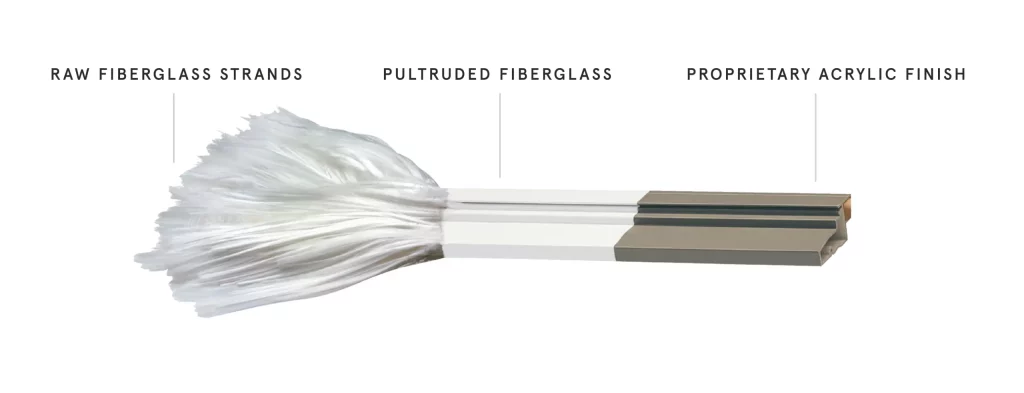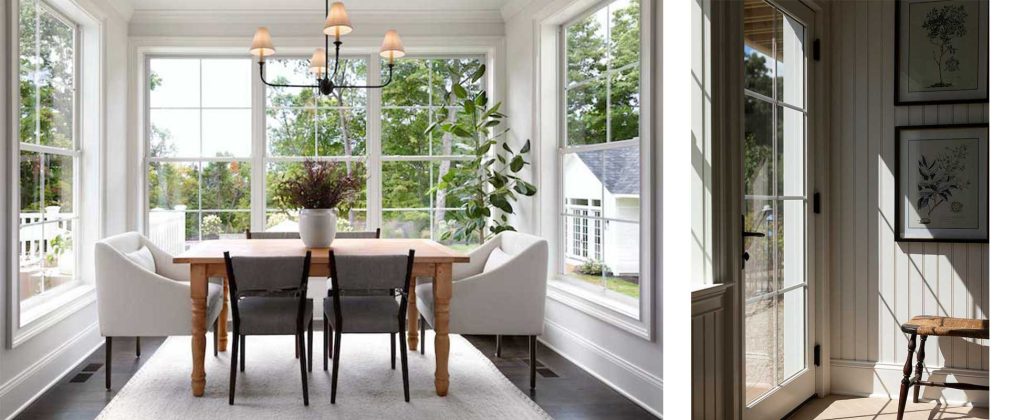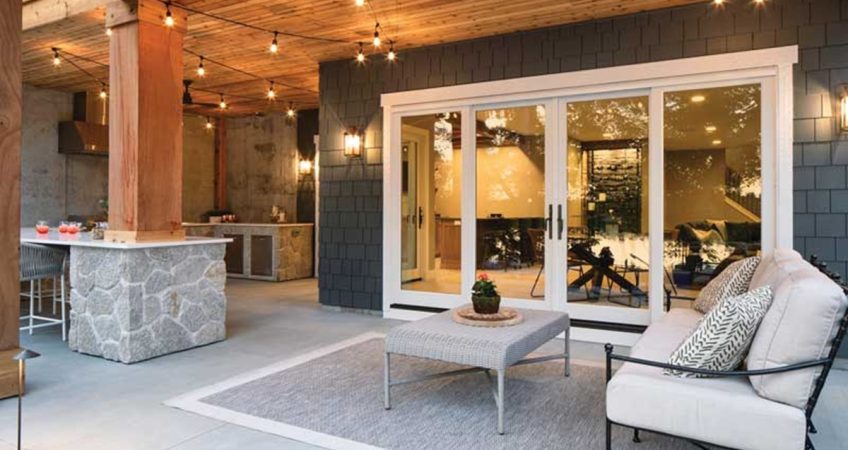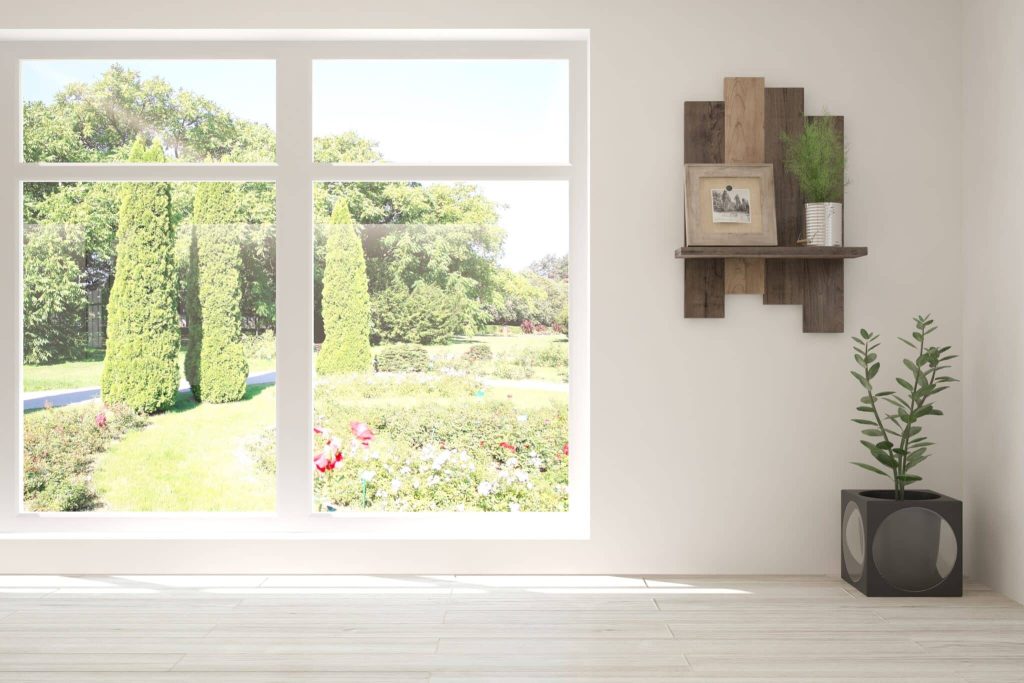Fiberglass vs. Vinyl Materials for Windows and Doors?
If you’ve started planning a home remodeling project, you’ve probably discovered fiberglass and vinyl building materials. Siding, doors, and windows are commonly made using fiberglass and vinyl materials, but often for different applications.
Fiberglass and vinyl offer similar benefits, like durability and stability. How do you know which material is best for your project? Fiberglass tends to be stronger than vinyl, but vinyl often requires less structural support because vinyl is lighter by volume than fiberglass.

Fiberglass doors and windows are an upgrade from vinyl, as fiberglass is more durable, more resistant to temperature, and much more robust in performance.
For example, most doors made from vinyl are not designed for security but rather for vinyl’s resistance to corrosion and low cost. Conversely, fiberglass doors are often selected as a front entry door for their resistance to impacts, temperature, and constant use.
Unlike vinyl doors, fiberglass doors are usually made from a fiberglass skin over a wooden or metal frame. This allows fiberglass doors to remain lightweight, insulatable, and resist warping.
Fiberglass front entry doors are considered secure, durable, and an upgrade from steel hollow core entry doors, vinyl doors, and some wooden doors. In contrast, vinyl doors are often used for screened porches, gazebos, and other outdoor structures where strength is not the primary concern but rather a low-maintenance surface.
Products made using fiberglass are recyclable and considered eco-friendly. Vinyl can also be recycled, but not as quickly. TRecyclingvinyl is considered less green because the VOC emissions from the recycling process can exceed those created during initial manufacturing.
The color options are nearly endless for both materials as well. The color of vinyl products is typically built into the fabric, while fiberglass is available in both colored and non-colored versions. Non-colored versions are typically sealed with paint or other sealer if used outdoors.
Choosing the appropriate material for your project is essential, as you will be living with your choice for many years. Fiberglass and vinyl are great options when you need a product that will maintain its functionality over time.
Here, we will discuss the main advantages and benefits both fiberglass and vinyl provide and a few caveats to watch for when using them.
What Materials Are Fiberglass and Vinyl Made From?
Fiberglass is made from a mixture of glass fibers and resins to form a durable building material. Fiberglass offers plentiful color options, has only about 50% of vinyl’s expansion and contraction rate, and is considered a green building material because much of it can be recycled.

Vinyl is made from polyvinyl chloride (PVC), durable plastic. Vinyl has a higher expansion and contraction rate than fiberglass, which means the material moves slightly when the temperature is very cold or warm. Vinyl offers many color options, excellent durability, and low maintenance.
What Are the Pros and Cons Of Fiberglass and Vinyl?
Both materials are appropriate for building windows, doors, siding, and other products designed for outdoor use. Here are a few pros and cons of each material and where you’ll likely find them in your home:
Fiberglass

Pros:
- Very resistant to minor impacts
- Resists warping
- Extended warranty when installed correctly
- Resistant to extreme heat
- Recyclable
- According to the US Department of Energy, fiberglass entry doors can offer five times the R-value of the same door made from solid wood.
Cons:
- Sometimes, fiberglass doors require painting, especially if they face a southwesterly direction. This helps reduce the UV damage that can occur over time.
- It is moderately expensive compared to vinyl but offers a far more comprehensive selection of styles.
Vinyl
Pros:
- Available in a wide selection of styles, colors, and thicknesses to meet most budgets.
- Resists moisture.
Cons:
- Minimum resistance to impacts
- Will fade over time
- Will melt and burn, emitting toxic fumes (volatile organic compounds, or VOCs)
- Vulnerable to temperature changes
- May crack, splinter, or shatter in frigid temperatures
- It tends to cast toxic dust if cut with power tools
What Are Fiberglass and Vinyl Used For On a House?
Manufacturers build materials from fiberglass and vinyl because both materials offer durability and many color and design options. Fiberglass is more versatile, durable, and attractive than vinyl, so fiberglass is a popular choice for front entry doors, roofs, and windows.

Roof Shingles
Fiberglass/asphalt shingles are among the most commonly used in modern construction. Vinyl shingles are often molded to simulate natural materials like cedar and poplar. Fiberglass is more durable and attractive than vinyl, so fiberglass roofs are the standard.
Doors and Windows
Fiberglass doors are among the most durable exterior entry doors you can find. Fiberglass doors are usually energy-star rated for their R-value, even those with glass features.
Fiberglass doors often require regular maintenance, especially if the door faces the south or southwest exposure. Most fiberglass entry door owners use the opportunity to show off their design flair and use a distinctive color to accent the texture of the fiberglass skin.
Vinyl doors are usually in the form of screens, storm, and patio doors. Vinyl is very friendly to molding processes, which allows for nearly endless design options. However, vinyl doors should not be used for security, as they are easily bent or damaged with force.
Siding
Vinyl is likely the most common house siding material used in modern construction. Vinyl is inexpensive, effective, and available in many colors to match many home designs. However, vinyl can sometimes be considered an entry-level material and inappropriate.
Fiberglass siding is commonly used on everything from starter homes to luxury homes for its balance of style, durability, and long life. In siding applications, fiberglass strands are often combined with cement to form a durable exterior lasting for decades.
Fiberglass siding is more expensive to purchase and install than vinyl siding but lasts longer. This reduces the material in landfills by extending the time between siding replacement projects.
Fascia, Rake, and Soffit
Like fiberglass siding, fiberglass fascia, rake, and soffit are among the most durable you can buy. However, the higher cost of fiberglass can be cost-prohibitive, depending on the project.
Conversely, vinyl enjoys an economy of scale because of its sheer abundance. Vinyl won’t usually last as long as fiberglass, but the lower cost of vinyl (up to 30%) is popular with homeowners.

Gutters and Downspouts
Vinyl gutters are mainly used for temporary spot repairs, as they are easy to install and offer a wide selection of accessories. However, vinyl gutters are generally inferior to fiberglass, aluminum, and copper gutters.
Fiberglass gutters are even more durable than the standard aluminum versions used in most construction projects. Fiberglass gutters are much more resistant to impact damage than aluminum gutters, reducing much of the maintenance required.
Flooring
Vinyl, tile, and wood are the most commonly used flooring materials in commercial and residential construction. Vinyl flooring is available in almost any shape, style, and design, making it among the most versatile.
Fiberglass flooring is generally considered an upgrade from vinyl, as fiberglass can endure more abuse. Fiberglass is a common component used in sheet flooring and laminates due to its durability and resistance to normal wear.
The Window and Door Shop of San Francisco. You can call us at (415) 282-6192, and we can talk to you about the process and what windows and doors might be best for your project. You can also visit a conveniently located showroom at 185 Industrial Street, San Francisco, CA 94124, to discuss your project with our knowledgeable and friendly team members. The Window and Door Shop of San Francisco is a proud dealer of Marvin and Glenview windows and doors for Northern California.




